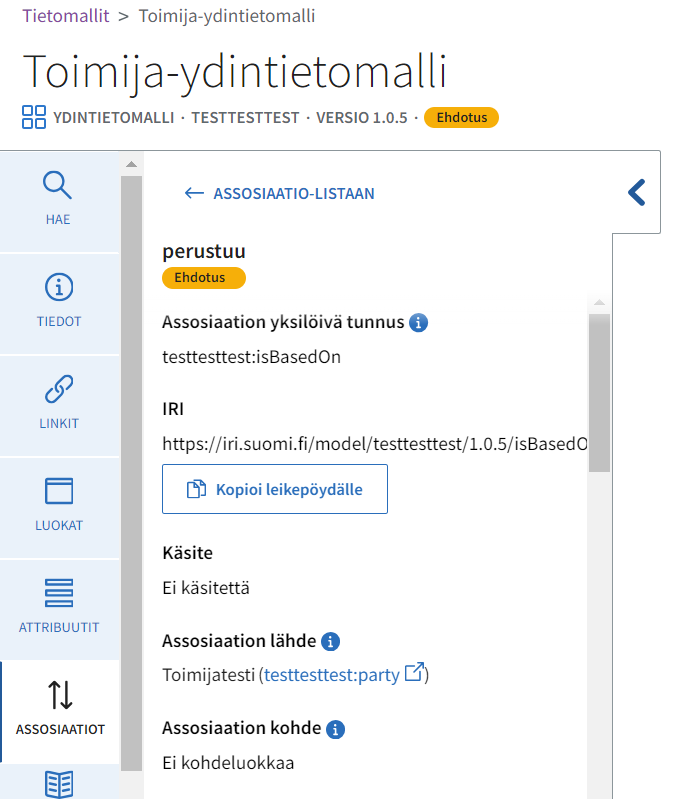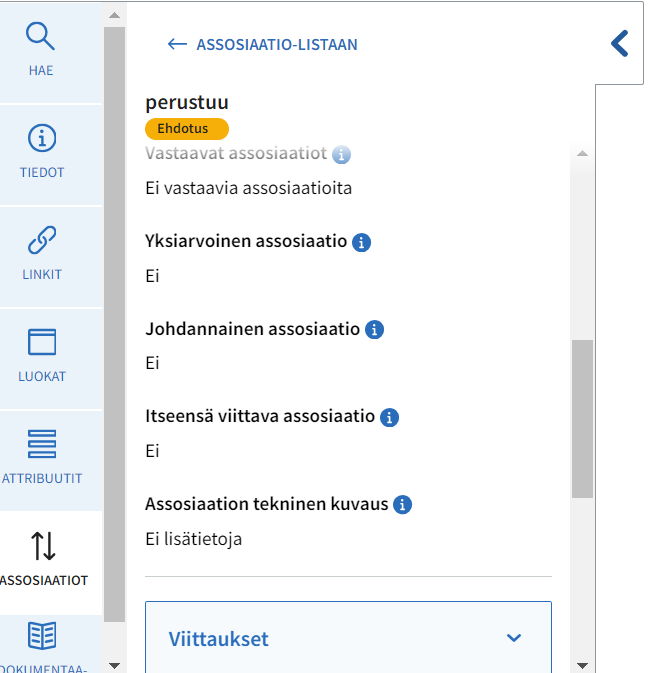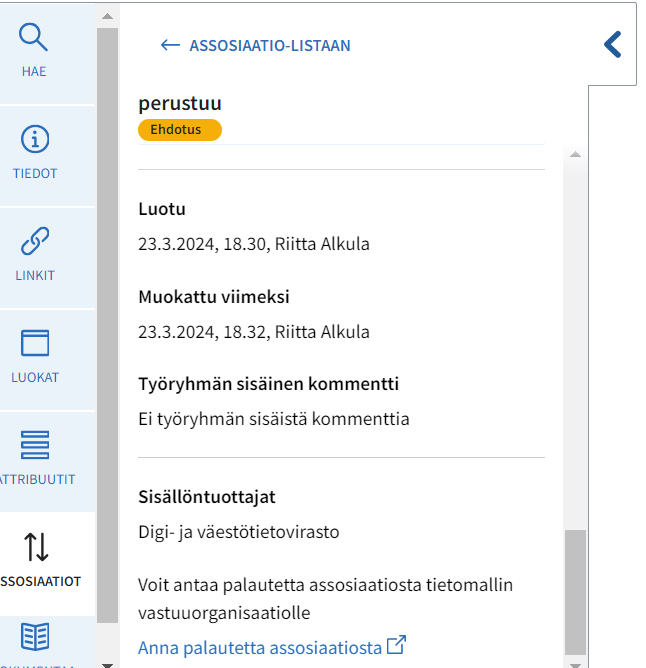The tool lists the associations of the data model in an alphabetical order to the Associations tab. You can also see the number of the associations.
Click the association of your choosing to see the more specific information of the association, for example:
- Name of the association
- Associations identifier in the Data Vocabularies Tool.
- Long identifier, IRI-address: IRI-address is a unique address for the association on the internet.
- With the IRI-address the association can be used as reference from outside of the Data Vocabulary Tool, for example in machine-readable interfaces.
- Concept: Link to the concept in the Terminologies tool, if attribute has been linked to a concept
- Associations source:
- The class that acts as the source of an association which creates a semantical relation between two classes. Starting point of the relation.
- Associations target:
- The class that acts as the target of an association which creates a semantical relation between two classes. Ending point of the relation.
- Upper association: Semantically more general association than this association.
- For example, owner > individual owner.
- Equivalent associations: The name of the equivalent association and the link to the association.
- Other associations that are semantically similar to this association. For example, connect -associate.
- Functional association: Boolean that indicates that the association can only have one value.
- For example, if the association is “identify”, it can be required, that for a Finn, the association can only refer to one valid personal identification number.
- Transitive association: Association that can be inferred from another association.
- For example, if X is the employer of Y, it can be inferred that Y is the employee of X.
- Reflexive association: Association, that can connect or refer to itself.
- For example, an organisation can include suborganisations, which are at the same time also organisations.
- Associations technical note:
- Textual description of the resource or the functions that provides further information for the users of the resource. For example, a use case or other information, that cannot be concluded from the description of the concept in a terminology, which has been linked to this association.
- References drop-down menu shows the resources that have used this association.
- Created: Date and time when the association was created. The users of your organization can also view the name of the person who created the association.
- Last modified at: The date and time when the association was last modified.
- Work group comment: Comments and instructions for other users editing the association. Is shown only to the logged-in users of the contributor organisation.
- Contributors: Organisation(s) who owns the content and maintains it in the Data Vocabularies Tool.
If you want to give feedback to the contributor organization, click Give feedback of the association link. The Data Vocabularies Tool will open a link to your email, the email of the contributor organisation already given in the recipient field.


